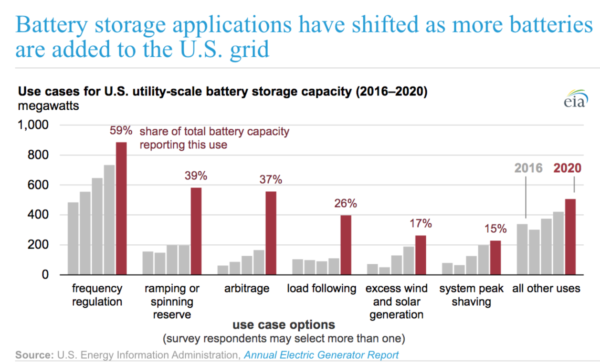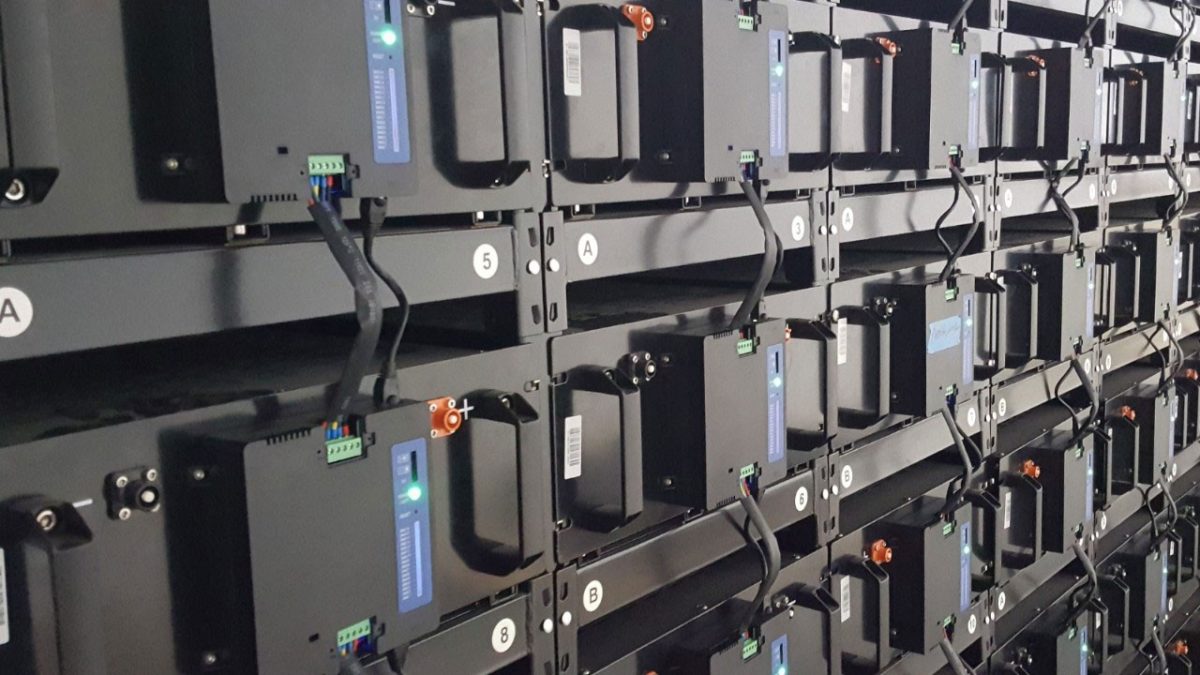Frequency regulation remains the most common use for utility-scale batteries, but other uses, such as ramping, arbitrage, and load following, are becoming more common as more batteries are added to the grid.
According to the Energy Information Administration’s (EIA’s) Annual Electric Generator Report, most utility-scale (greater than 1 MW of capacity) battery storage applications perform several roles depending on revenue opportunities or system support requirements.
The most commonly cited use case for batteries is frequency response, a service that maintains grid frequency as close to 60 Hz as possible. EIA said that batteries are well suited for this service because their output does not require any startup time and batteries can quickly absorb surges. At the end of 2020, 885 MW of battery storage capacity (59% of total utility-scale battery capacity) cited frequency response as a use case.

At the end of 2020, some 583 MW of battery storage capacity (39% of total) cited ramping or spinning reserve as a use case. Spinning reserve is a set of ancillary services in which generators respond to system disruptions, such a sudden loss of generation or a rapid change in demand. Regions that have a relatively high proportion of electricity generation from sources such as solar and wind tend to require resources that can respond quickly.
(Read our two-part series “Should I include a battery with my home solar project?“)
EIA said that arbitrage is a strategy of buying electricity during low price periods and selling during high price periods. Battery storage supports this by charging when power prices are low and discharging when prices are high. This use case increased by 390 MW from 2019 to 2020, the greatest capacity increase among use cases, EIA said. At the end of 2020, some 586 MW of battery storage capacity (37% of total) was used for arbitrage.
Finally, EIA said that load following is an operating strategy in which generators change their output to match changes in electric demand, or load. Batteries are used for load following because their output can be digitally controlled and can respond to load changes with less stress than mechanical systems. Nearly 400 MW of battery storage capacity was used for load following in 2020.
This content is protected by copyright and may not be reused. If you want to cooperate with us and would like to reuse some of our content, please contact: editors@pv-magazine.com.









By submitting this form you agree to pv magazine using your data for the purposes of publishing your comment.
Your personal data will only be disclosed or otherwise transmitted to third parties for the purposes of spam filtering or if this is necessary for technical maintenance of the website. Any other transfer to third parties will not take place unless this is justified on the basis of applicable data protection regulations or if pv magazine is legally obliged to do so.
You may revoke this consent at any time with effect for the future, in which case your personal data will be deleted immediately. Otherwise, your data will be deleted if pv magazine has processed your request or the purpose of data storage is fulfilled.
Further information on data privacy can be found in our Data Protection Policy.